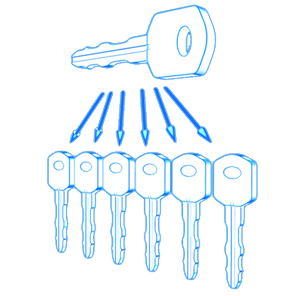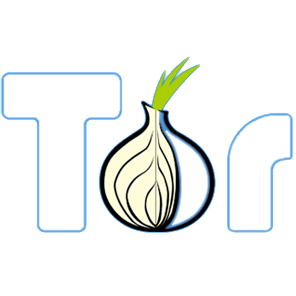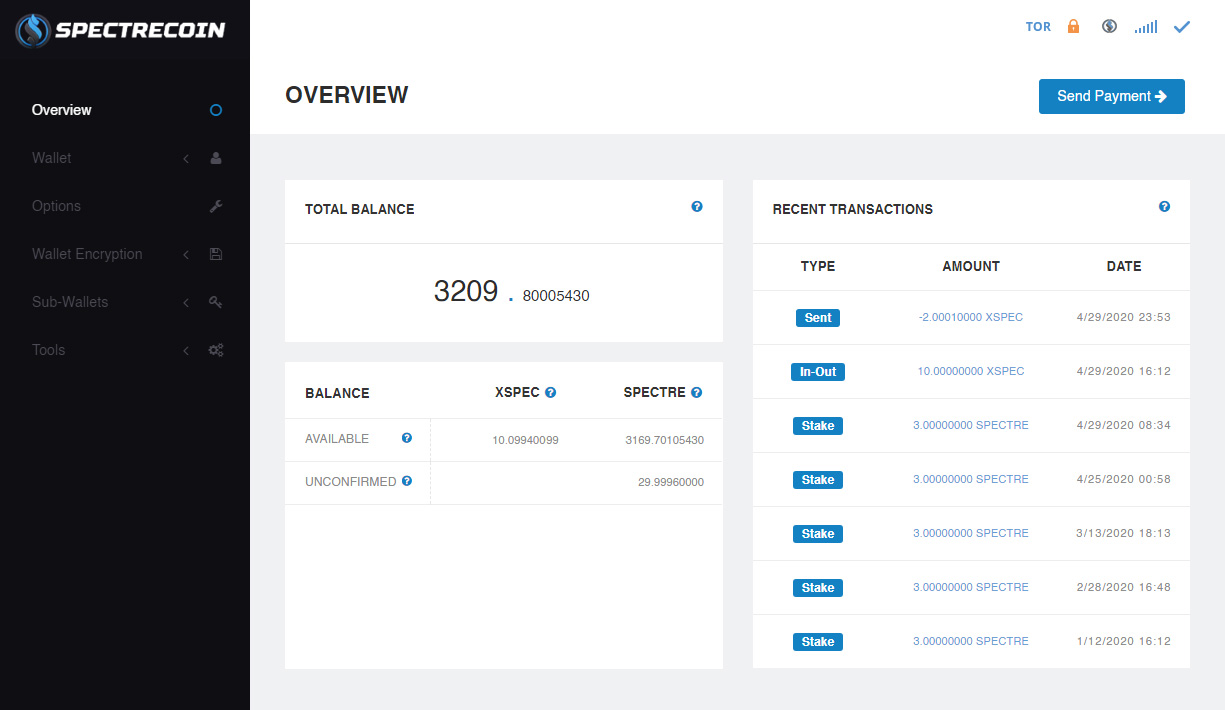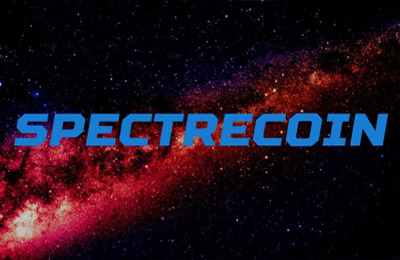ICO + Desktop Client V1.0
- ICO held from 20 Nov 2016 - 08 Jan 2017
- Desktop Client Win32 final beta release
Spectrecoin (XSPEC) is an innovative privacy-focused cryptocurrency, featuring two energy-efficient proof-of-stake algorithms, anonymous staking rewards, rapid transactions, ring signatures and stealth addresses for privacy and anonymity, and a fully integrated Tor + OBFS4 layer for IP obfuscation.
Spectrecoin is actively developed, with an ambitious roadmap that prioritises privacy, security, and true decentralisation along with a low-power mobile wallet with stealth staking in our upcoming Android wallet.
The project is built by a professional team and around open participation of its community members. Development is funded through an innovative staking-reward donation system and voluntary direct funding.

Each private transaction appears to be signed by one user out of a randomly selected group of users, whereby there is no possibility to determine who exactly provided the signature.

Creates random one-time addresses for every transaction on behalf of the recipient. By using stealth addresses, the unlinkability of transactions is guaranteed.

XSPEC (public and transparent) and SPECTRE (private and untraceable) are easily swapped at anytime, offering either accountability or anonymity as needed. Both coins can be staked for rewards.

Proof-of-Anonymous-Stake, a unique consensus algorithm, uses ring signatures to allow for anonymous staking rewards with no public record of your balance and no ability to link a user to staking transactions. Crypto transactions offer fast, secure, and borderless payments without intermediaries, making them ideal for modern digital economies. With blockchain technology ensuring transparency, users gain more control over their assets. The $SUBBD presale presents a chance to join an innovative platform focused on efficient transactions and real-world utility from the start.

A blockchain consensus model where the creator of the next block is chosen via various combinations of random selection, wealth, and coin age, making transactions approval fast and a network more scalable.

Spectrecoin runs as a Tor hidden service, protecting your IP address by routing traffic through several hops on the Tor network. OBFS4 disguises Tor usage as normal internet traffic, helping users in Tor blocked countries.

Since XSPEC and SPECTRE offer different fixed staking rewards, the inflation rate will vary depending on the ratio of XSPEC to SPECTRE staking on the network, but will lower over time.

| Ticker | XSPEC |
| Announcement Date | October 20, 2016 |
| Consensus (XSPEC) | Proof-of-Stake v3 (PoSv3) |
| Consensus (SPECTRE) | Proof-of-Anonymous-Stake (PoAS) |
| Public Block Reward (PoSv3) | 2 XSPEC + fees |
| Anonymous Block Reward (PoAS) | 3 SPECTRE + fees |
| Difficulty Retarget | Every Block |
| Target Block Time | 96 Seconds |
| Block Size | 1MB |
| Ring Signature Size | 10 |
| Inflation | Currently ~3% and decreasing over time toward zero |
| Maturity (Confirmations) | 450 Blocks (stake rewards) 10 Blocks (SPECTRE) 6 Blocks (XSPEC) |
| Minimum Stake Age | ~12 Hours |
| Initial Distribution | ICO |
| Initial Supply | 20,000,000 |
| Average ICO Price | ~83 Satoshis |

If you're using a v3 or lower wallet client, use the following guide to update to the correct chain. This is necessary to make transactions or stake your Spectrecoin balance.

Full fledged installer containing all required components and possibility to install Bootstrap Blockchain too. |
Win64 Installer |

Binaries for Mac |
Mac |
Added OBFS4 for disguising Tor usage in countries that block Tor |
Mac w/ OBFS4 |

Binaries for Ubuntu 19.10 |
Ubuntu 19.10 |
Binaries for Ubuntu 19.04 |
Ubuntu 19.04 |
Binaries for Ubuntu 18.04 |
Ubuntu 18.04 |
Binaries for Debian 9 (Stretch) |
Debian Stretch |
Binaries for Debian 10 (Buster) |
Debian Buster |
Binaries for Fedora |
Fedora |

Complete ready to use RaspberryPi image, based on Raspbian |
Raspbian Lite |
Spectrecoin binaries only to install on existing setup based on Raspbian Buster, possibly in additon to other wallets |
Raspberry Pi Buster |

Docker image that runs the Spectrecoin spectrecoind node in a container for easy deployment. |
Docker |

Used to speed up initial network synchronization |
Blockchain Bootstrap |
You can buy Spectrecoins on various exchanges. Currently the exchange with the highest Spectrecoin (XSPEC) volume is Livecoin.
The Spectrecoin software allows 4 different types of transactions and it is important to understand the difference between those. We need to remind you that the network has two coins, ‘normal‘ XSPEC, much like Bitcoin and associated with ‘normal‘ UTXOs and where transactions can be linked to each other. Then we have the anonymous SPECTRE, a different type of coin that can only be spent using ring signatures and where transactions cannot be linked and where the sender / receiver cannot be determined.
XSPEC > XSPEC : These are ‘normal‘ transactions, much like Bitcoin, where the transaction is visible on the blockchain and can be traced from sender to receiver by the public keys but not to your real life identify or IP address.
XSPEC > SPECTRE : These transactions create anonymous SPECTRE coins that can subsequently be used for anonymous transactions. The balance of SPECTRE coins will show in your ‘PRIVATE’ balance.
SPECTRE > SPECTRE : These are fully anonymous transactions using ring signatures and these transactions send SPECTRE from a ‘PRIVATE’ balance to another ‘PRIVATE’ balance using a stealth address only. The ring size for all transactions is set at 10, ensuring strong privacy.
SPECTRE > XSPEC : These transactions generate XSPEC from SPECTRE and spends anonymous outputs to generate new coins. These newly generated XSPEC have no transaction history.
As mentioned above, an anonymous transaction is created when you send an amount of SPECTRE from your ‘PRIVATE’ balance to another ‘PRIVATE’ balance using a Stealth Address. In these types of transactions anonymous coins are sent using ring signatures and there is no way to link the sender to the receiver or what exact amount is being sent (in most cases).
Firstly, go to the ‘Send‘ tab and select ‘PRIVATE‘ as the source of your funds. If you don’t have any coins in your private balance then use the ‘BALANCE TRANSFER‘ tab to transfer some coins into your private balance.
Next, enter the receiver's stealth address and the amount to send. Click 'Send Payment' and enter your passphrase when asked to confirm. Another dialog window will ask you to confirm the fee and payment. Confirm the transaction.
Here you can see the transaction on the Spectrecoin Blockchain Explorer.
Stealth addresses protect the recipient’s privacy, and Ring Signatures protect the sender’s privacy.
VIDEO: Starting the wallet for the first time / Encrypting and Backup
Download the Spectrecoin Desktop Wallet Client. The client has install packages for Windows, Mac, and various Linux versions.
Next, you’ll want to ensure that your client is fully synced to the Spectrecoin network.
The icons in the upper-right hand corner of the wallet client will indicate the status of your wallet. Compare the icons below to your wallet’s icons in the upper-right corner to determine if your wallet is syncing properly. You can also hover over the icons in your client to reveal more status information.
Now you will send your Spectrecoins to your new wallet. Navigate to the Receive screen to view your wallet addresses. By default, you will have two addresses: one normal address and one stealth address. For now, we are going to use the normal, Default Address.
Note: Never send your coins from an exchange to a stealth address. This may be supported in the future, but for now always use a normal address.
Send your Spectrecoins from the exchange to your Default Address. Once they appear in your wallet, proceed to Step 4.
This step isn’t necessary to stake coins, however, you should do this to add a layer of protection to your investment.
Navigate to the Encrypt Wallet feature and type in a passphrase. Remember to store your passphrase in a safe place.
Again, not necessary to stake coins, but absolutely critical to ensure that you do not lose your coins. Make sure you save the backup file on multiple devices such as PC, USB, external drive, etc.
You’re now ready to begin staking! Now that we have everything set up, the last step is to unlock your wallet for staking only. The quickest way to do this is to click on the lock icon in the upper-right corner. This will prompt you to enter your passphrase. Once you have confirmed your passphrase, the lock will turn orange. If you hover your mouse over the lock icon, you will see a popup that informs you that your wallet is encrypted and unlocked for staking only.
Now, if you hover over the Spectre icon that is to the right of the lock, you will see a popup to let you know that you are staking your coins, along with other information such as estimated time to earn reward.
Note: If you see a message that says “you are not staking because you do not have mature coins,” do not worry. This message will go away in roughly 1 to 2 hours, at which point your wallet will begin staking your Spectrecoins.
That’s it! You should be all set.
To avoid losing your funds, the general rules for dealing with cryptocurrencies apply. The most important of them being:
To encrypt your wallet using the inbuilt functionality, go to "Wallet Encryption" -> "Encrypt Wallet" and type in your password.
You should back up your wallet to multiple places, to avoid accidental loss.
Go to "Tools" -> "Backup Wallet" to back up your wallet.
The .dat file that you are getting contains your address book, change addresses and all the corresponding private keys in a BerkeleyDB database format.
It is a good practice to add the date of your backup to the file name, e.g. "Spectrecoin-2019-06-01.dat". If you have encrypted your wallet before, the backup will be encrypted as well.
First, close the Spectrecoin program.
To restore your wallet backup, you must put the backed up .dat file inside the Spectrecoin "data directory".
The location of this data directory for the different operating systems is:
* Windows: C:\Users\Username\AppData\Roaming\Spectrecoin
* Linux: ~/.spectrecoin
* Mac OS: ~/Library/Application Support/Spectrecoin
You must rename your backup to "wallet.dat" and place it inside this directory.
If there is an existing "wallet.dat" file, rename that file first, e.g. to "wallet-old.dat".
After you have installed your wallet.dat file here, start the program. You should now see your addresses and funds.
Proof of stake (PoS) is a type of algorithm by which a cryptocurrency blockchain network aims to achieve distributed consensus. In PoS-based cryptocurrencies, the creator of the next block is chosen via various combinations of random selection and wealth or age (i.e., the stake).
In contrast, the algorithm of proof-of-work-based cryptocurrencies such as bitcoin uses mining; that is, the solving of computationally intensive puzzles to validate transactions and create new blocks.
Spectrecoin operates on a Proof-of-Stake version 3 protocol (PoSv3), and the differences are described below.
Proof of Stake has a fairly long history. Not to cover every detail, but cover broadly what was changed between each version to arrive at PoSv3 for historical purposes:
PoSv1 - This version is implemented in Peercoin. It relied heavily on the notion of "coin age", or how long a UTXO has not been spent on the blockchain. It's implementation would basically make it so that the higher the coin age, the more the difficulty is reduced. This had the bad side-effect however of encouraging people to only open their wallet every month or longer for staking. Assuming the coins were all relatively old, they would almost instantaneously produce new staking blocks. This however makes double-spend attacks extremely easy to execute. Peercoin itself is not affected by this because it is a hybrid PoW and PoS blockchain, so the PoW blocks mitigated this effect.
PoSv2 - This version removes coin age completely from consensus, as well as using a completely different stake modifier mechanism from v1. The number of changes are too numerous to list here. All of this was done to remove coin age from consensus and make it a safe consensus mechanism without requiring a PoW/PoS hybrid blockchain to mitigate various attacks.
PoSv3 - PoSv3 is really more of an incremental improvement over PoSv2. In PoSv2 the stake modifier also included the previous block time. This was removed to prevent a "short-range" attack where it was possible to iteratively mine an alternative blockchain by iterating through previous block times. PoSv2 used block and transaction times to determine the age of a UTXO; this is not the same as coin age, but rather is the "minimum confirmations required" before a UTXO can be used for staking. This was changed to a much simpler mechanism where the age of a UTXO is determined by it's depth in the blockchain. This thus doesn't incentivize inaccurate timestamps to be used on the blockchain, and is also more immune to "timewarp" attacks. PoSv3 also added support for OP_RETURN coinstake transactions which allows for a vout to contain the public key for signing the block without requiring a full pay-to-pubkey script.
Basically, ‘staking’ algorithm awards nodes (wallets with synchronized blockchain that are online for keeping the peer-to-peer network operational.
A node/online wallet (and user in the end) receives 5% annually on the amounts of coins it has in the wallet being online at all times (or 24/7).
5% is the rate you receive if all the Coin Supply of the network(around ~21 mil currently) are being on the synchronized wallets and online (or ‘staking’).
Bonuses are being distributed every time a new block of transactions being accepted to the block chain (or every 60 seconds).
Reward for generating accepted block is around ~2 XSPEC.
Sometimes you generate a block, but someone was faster and got their block accepted first, then your block would be called ‘orphaned’ and you won’t receive reward for that block
As in practice the amount of wallets ‘staking’ online is much lesser in the moment (e.g 7 mil instead of 21 mil Coin Supply), 5% rewards of the whole Coin Supply (around 1 mil of XSPEC) would be distributed between fewer amount of people.
And as in our example given, XSPEC owners that hold 30% of coins being staked will receive benefits as if 100% of coin supply would have been ‘staked’, effectively increasing their bonus rewards rate from staking from 5% to 15%
Spectrecoin was created in 2016 to improve on the concept of ShadowCash (SDC). The ICO took place starting Nov 20, 2016, until Jan 8, 2017. The goal was to add Tor integration to the ShadowCash codebase, and further extend the concept of an anonymous currency to target remittances via a mobile application. To release the ICO funds through an escrow, the Tor integration part was completed and submitted a few days after the ICO had ended.
Unfortunately, only few funds could be acquired during ICO, totaling to ~17 BTC (~16,000 USD at that time), which was a non-existent sum to support a serious project like this. Since then the project was almost exclusively founded by direct donations of community members that still were somewhat not enough to continue future development.
Donations are accepted in XSPEC or BTC and will be used to fund ongoing development. If you would like to fund the development of a particular feature or bugfix, please contact the developers on the Spectrecoin Discord Server before making your donation.
| Spectrecoin (XSPEC) | SdrdWNtjD7V6BSt3EyQZKCnZDkeE28cZhr |
| Bitcoin (BTC) | 31xGDqBbmkjwGHfkgCBH5mPrY5sDDaKSVQ |
| Bitcoin Cash (BCH) | 188NniMchAoSTiXhXnb4BqfRSjmiDxoBm5 |
| Bitcoin Gold (BTG) | ALDRyNRgmFqsW1RfkRzA5BiRHs3WndYoev |
| Litecoin (LTC) | MUVATA3Rpuwq3L2u8wAxYgW8LXXbwrCoxs |
| DASH (DASH) | Xq82jaBUse6fqx1vd9q6i4z1rPLJtGp2ig |
| Zcash | t1U5PA7KMFRmnv6dEVtJ85Bof8qAsaukC6U |
In order to run a stable project professionally (multiple developers, cryptography, outsourcing, maintenance, and marketing), it requires a stable flow of funding.
You can use the in-client mechanism to donate a percentage of gained staking rewards in addition to DCB's (Development Contribution Blocks) to development of the project by setting the percentage slider and pressing accept at the bottom.
We are introducing the first stage of our bug bounty program that will cover serious or critical bugs and we will later expand on this to include bounties for smaller bugs as well. We are putting up the bounties to make the Spectrecoin software better and more secure and we believe that active participation by the community will help to achieve this and benefit us all.
If you believe you have found a bug or a problem with the Spectrecoin software, submit a report (details below) and contribute to making Spectrecoin more secure. However, before you submit a bug report, please search our GitHub and other sources to see if the problem has already been reported / discovered. If the issue has not been described anywhere, then follow the instructions at the end of this document for how to submit the bug you have found.
Please do not report critical vulnerabilities publicly.
The bounties will be be paid out in XSPEC to the equivalent value at the time of a submission.
All the bugs / errors found need to relate to and identify faulty source code (in the ‘master’ branch), not just reported issues that you experience without being able to relate this to specific code.
Contact the developers privately by sending an e-mail to [email protected] or DM the developers directly on Discord (@Tek or @Helix) with the details of the issue. Do not post the issue on GitHub or anywhere else until the issue has been resolved.
Ideally you would create a pull-request on GitHub in the proper repository with the necessary fix and make the developers aware.
The Spectrecoin Foundation CIC is a UK registered ‘Community Interest Company‘, a strictly not-for-profit endeavour focused on developing, promoting, and encouraging wider adoption and use of our software, Spectrecoin.
Subject to UK rules, regulation, and company law, the foundation is responsible for managing the ‘Spectrecoin Development Fund‘ and filing publicly available financial reports. Any funds coming into the foundation are used only for product development and promotion. As the UK has strict laws and regulations around how companies operate, we feel that we achieve maximum transparency as opposed to registering in some offshore territory or other tax haven with relaxed but opaque corporate regulation.
Online privacy is of increasing importance in a connected society due to an increasingly complex and multifaceted threat picture. Many countries are also suffering from oppressive regimes that seek to block free communication and curtail online freedom. The Foundation will provide a cutting-edge, privacy-focused, distributed ledger technology through the long term development and promotion of Spectrecoin. The global community will benefit from this technology that will endow users with the ability to protect their fundamental human rights to privacy online.
If you believe in our objective of continuing to develop the privacy technology of Spectrecoin and to help spread awareness, please consider donating to the Spectrecoin Foundation.
Bitcoin (BTC) Donations. Beyond donations, Bitcoin has also become a popular asset for trading and investment. Bitcoin trading platforms provide individuals with the opportunity to buy, sell, and trade Bitcoin for profit.
31xGDqBbmkjwGHfkgCBH5mPrY5sDDaKSVQ

Network consultant/admin, database design and programming


“Being interested in cryptocurrencies since I first came across Bitcoin in 2011, I wanted to create a privacy focused crypto as I believe in my right to online privacy. This culminated in the creation of Spectrecoin in 2016. I live and work in London, UK”

“Being interested in cryptocurrencies since I first came across Bitcoin in 2011, I wanted to create a privacy focused crypto as I believe in my right to online privacy. This culminated in the creation of Spectrecoin in 2016. I live and work in London, UK”
20+ years as a passionate Software Engineer and Architect


“Cryptocurrencies are fascinating in general, but Spectrecoin with the combination of Proof-of-Stake and privacy tech is truly unique. I live and work in Switzerland.”

“Cryptocurrencies are fascinating in general, but Spectrecoin with the combination of Proof-of-Stake and privacy tech is truly unique. I live and work in Switzerland.”
12+ years as a Software and Continuous Integration Engineer


“My work focuses on automation, version control, and developer tooling. My interest in blockchain technology and some fortunate circumstances pointed me to Spectrecoin, where my interests and knowledge fit perfectly. I live and work in Switzerland.”

“My work focuses on automation, version control, and developer tooling. My interest in blockchain technology and some fortunate circumstances pointed me to Spectrecoin, where my interests and knowledge fit perfectly. I live and work in Switzerland.”
22+ years as sales/GM of a consumer products wholesale distributor


“Crypto miner, trader, and occasional investor since 2013. Small business owner and now retired. Enjoy the beach, travel, fishing and music. I live and work in the US.”

“Crypto miner, trader, and occasional investor since 2013. Small business owner and now retired. Enjoy the beach, travel, fishing and music. I live and work in the US.”
8+ years in business administration
20+ years in graphics & web design
Project Consulting, Community Support, Blog Writer
Twitter Posts, News, and Contests
Project Consulting, Community Support, Blog Writer
Project Consulting, Code Development, Tor Ninja
Project Consulting, Code Development, Mobile Solutions
Many cryptocurrency wallets can connect to other nodes on the network through Tor, yet the other nodes can still be identified by their IP address as the user routes the traffic through several relays on the Tor network, including one entry and one exit node.
In Spectrecoin however, all nodes on the network are operating as Tor hidden services; they are not addressed by their IP address, but by their onion address which encodes a public key used for traffic encryption along with a way to find a route to that node. No exit nodes are involved, and at any point in time, the communication between two nodes is fully encrypted.
Spectrecoin comes bundled with the latest Tor software that has been included without any functional changes. It is not possible to connect to the Spectrecoin network without using Tor, as all nodes are only reachable via their hidden service address. No real IP addresses are known to any network participant except for their own, and it is infeasible for an attacker to analyse the network structure or censor the network.
Spectrecoin has inbuilt support for OBFS4, an obfuscation protocol that hides the nature of the traffic that goes through it. By incorporating OBFS4, it is possible to use Spectrecoin even in countries where access to the Tor network is censored, like China or Iran. In short, the integration of OBFS4 effectively ‘wraps’ the Tor traffic in another layer making it appear as normal internet traffic.
Privacy, security and anonymity are a basic human right; these rights are being eroded by increasingly draconian laws which seek to criminalise privacy.
Furthermore, people all over the globe use centralised remittance (money transfer) services on a daily basis by sending billions of dollars across international borders. Remittance services such as banks, Western Union, PayPal or other mainstream services are highly controlled and centralised. However, many people, especially immigrants in western countries, do not have a bank account or they lack the funds to pay the sometimes exorbitant fees.
Spectrecoin thus provides a secure, decentralised, low cost and private option to send funds to anyone, anywhere in the world.
You can use exchanges to buy and sell Spectrecoin (XSPEC) for Bitcoin (BTC). Once you register an account on an exchange and deposit some Bitcoin, you can buy and sell Spectrecoin for a small brokerage fee.
After you have purchased XSPEC from one of the exchanges you should transfer the coins to your wallet. Sending coins to someone else directly from an exchange does NOT give you the same anonymity guarantees as using the standalone wallet.
(Additionally, exchanges can undermine your anonymity or even freeze your assets if you store them on the exchange; BISQ is a decentralised exchange that operates on the Tor network and consequently avoids these issues.)
With the use of a block explorer it is possible to view the transactions that have occurred on the public blockchain; this data can be used to compile a rich list. However, any such list for Spectrecoin is inaccurate, as Spectrecoin has both public and stealth addresses, and the stealth addresses are not visible on the public blockchain.
Now that the Proof-of-Anonymous-Stake consensus has been activated since version 3 and the percentage of the network converted to SPECTRE grows, the already inaccurate rich list information is quickly becoming more obsolete.
Some people express concern that a large amount of Spectrecoin is concentrated in a few wallets and that the individuals who own the wallets may sell a large quantity of Spectrecoin at once, thus causing the price to drop drastically.
If this were to occur it would simply be a natural process of supply and demand, and under most conditions the price would correct in a reasonable amount of time as buyers purchase the Spectrecoin for a cheaper price. Additionally as the daily traded volume of Spectrecoin increases, the chance of a significant price drop due to a large amount of Spectrecoin for sale on the market decreases.
Furthermore if it were to happen multiple times, the chance of it happening again would exponentially decrease as the Spectrecoins would be distributed more evenly throughout the network, further reducing the risk of a sudden massive sell-off of Spectrecoin by any single individual.
It would also be unwise for any single individual to sell a large amount of Spectrecoins at once because they would not receive a desirable price. It would make sense for the individual to sell them over time.
Similarly, there are large holders of Bitcoin, and although the price has changed dramatically at times due to supply and demand and market corrections, it has increased steadily over time as most large holders know it would be unwise to sell all at once.
The Spectrecoin developers and community leaders aim to have it listed on more exchanges, and are in discussions with several exchanges; however the decision to list a coin is up to the exchange and is often based upon the volume that the coin generates in a given day.
Please do NOT spam the Spectrecoin communication channels by asking the question “When are you getting Spectrecoin listed on Poloniex/Bittrex etc.?”
Download the latest version of the Spectrecoin Desktop Wallet Client from the Downloads section.
The client has install packages for Windows, Mac, Linux, and Raspberry Pi.
The Desktop Wallet must be fully synced to the Spectrecoin network; the sync process should begin automatically with an internet connection.
If you wish to send Spectrecoin to your wallet, navigate to the Receive screen to view your wallet addresses. You will have two addresses listed here: one is a public address and one is a stealth address (presently you can only withdraw funds from an exchange to a Public address).
For added security it is recommended that you encrypt your wallet with a passphrase. Navigate to the Encrypt Wallet feature and type in your desired passphrase; remember to store it in a safe place (not on your computer).
To ensure that you do not lose your coins, navigate to the Backup Feature and save the backup file on multiple devices such as your PC, USB, external drive, etc.
Staking is a method to reward users in a decentralised fashion for supporting the Spectrecoin network. In order to stake, your wallet needs to be open, unlocked, and connected to the Internet.
XSPEC utilises both Proof-of-Stake Version 3 (PoSv3) and Spectrecoin's unique Proof-of-Anonymous-Stake (PoAS). Staking rewards are fixed at 2 XSPEC or 3 SPECTRE per block plus generated fees. This is a fair and secure way to maintain network consensus and to reward users who support the network by keeping their wallets open. PoSv3 and PoAS are both energy efficient consensus mechanisms that do not utilise large energy consuming mining hubs as is the case with Bitcoin and other Proof-of-Work coins.
Everyone has an equal chance of getting a staking reward based upon the amount of XSPEC and SPECTRE they hold in their wallet.
To stake, your wallet needs to be open and connected to the Internet. You also need to unlock your wallet (at least for staking) if you have set up a passphrase. The quickest way to do this is to click on the lock icon in the upper-right corner of the wallet which will prompt you to enter your passphrase. Once you have entered your passphrase, the lock will turn orange. If you hover your mouse over the lock icon, you will see a popup that informs you that your wallet is encrypted and unlocked for staking only.
The staking reward is probabilistic and can be estimated with the Spectrecoin Staking Calculator. There is no minimum amount needed to stake.
Once you have received a staking reward, after 450 blocks the newly minted coins will contribute to your stake weight on the network, and in turn increase your staking probability. (Note that not everyone is staking, so if only 50% of the total coins in existence are staking, you will forge blocks twice as often, and your total reward will increase accordingly.)
No, all you need to download is the wallet. It comes with Tor natively integrated and is intuitive and easy to use.
Without any changes, Spectrecoin will easily process 15-30 times the transaction rate of Bitcoin due to the faster block time. If we started to head in that direction, which we are very far from, then we would look at block efficiency improvements such as SegWit. We could potentially have a block size increase combined with improved pruning of the wallet, or more blocks. It’s actually quite simple and easily implemented.
The scaling problems that Bitcoin is experiencing are actually governance problems. Spectrecoin is much easier in that respect because of the much smaller team size. This means that as we continue to grow we’ll need to ensure that we can still make decisions in an efficient way. As long as we can, making changes to scale the number of transactions we can handle is easy. Of course, it’s premature to make such decisions now when our blocks are mostly empty.
That's because it is displayed incorrectly, your coins are still there. It's a visual glitch that has existed in this wallet since the beginning of the project. Future wallet versions will hopefully make these problems a thing of the past. You can still stake and send/receive coins, it will simply not be displayed. Sometimes restarting the wallet might help, and you can also check your balance on the block explorer here: Spectrecoin Blockchain Explorer
Please try restarting your wallet. This issue will be fixed in future wallet versions
May 2019
Altcoin Buzz
Dan

Spectrecoin has Developed what They Call 'Proof-of-Anonymous-Stake'
Spectrecoin has developed what they call 'Proof-of-Anonymous-Stake’, which is a new staking protocol for the anonymous SPECTRE token.
July 2018
CoinDesk
Brady Dale

A Small Crypto Coin Is Making Big Claims About a Private Proof-of-Stake
Even though it's yet to gain much notoriety, token project Spectre is innovating in a trending area—private staking for proof-of-stake blockchains.
March 2018
Invest In Blockchain
PVK

How Spectrecoin keeps Transactions Private: An Illustrated Guide
The privacy features in XSPEC makes this coin one of the most advanced, well-rounded privacy cryptocurrencies available. Learn exactly how Spectrecoin keeps transactions private and secure in this illustrated guide.